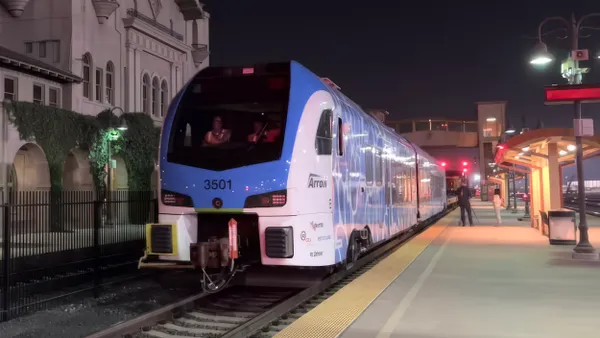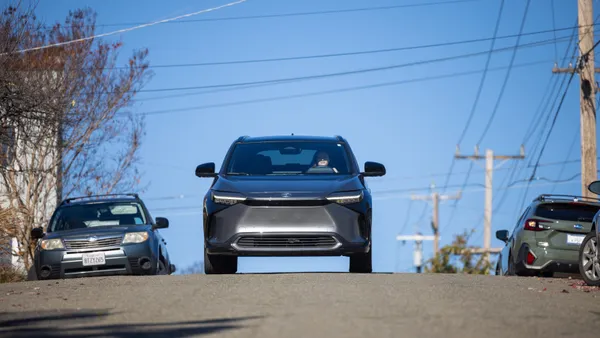Even with electric vehicle incentives and other provisions of the Inflation Reduction Act, the U.S. will miss its 2030 emissions target under the Paris climate agreement, according to a white paper released Tuesday by the International Council on Clean Transportation, in partnership with Energy Innovation.
In April 2021, President Joe Biden committed the U.S. to reduce net greenhouse gas emissions by 50% to 52% below 2005 levels come 2030. The administration’s strategies to reduce transportation emissions included incentives for purchasing personal EVs, funding to build out the nation’s EV charging network, reductions in tailpipe emissions and investments in alternative transportation options, including transit, passenger rail, biking and pedestrian infrastructure.
While the Inflation Reduction Act will help exceed the administration’s goal for EVs to account for half of all light-duty vehicle sales in 2030, the report found that electric vehicles would have to amount to two-thirds of sales that year, coupled with 3.5% annual increases in the efficiency of internal combustion engine vehicles, in order to comply with the Paris agreement goals.
The U.S. Environmental Protection Agency is finalizing standards to strengthen greenhouse gas emissions regulations for passenger cars and light trucks through 2026 and plans to toughen emissions regulations for heavy-duty vehicles through 2030.
“Stringent standards from EPA is a really critical way to push the industry to meet those targets and enable us to realize these rates of electrification,” said Stephanie Searle, U.S. director at ICCT.
The report found that even without EPA action, EVs could account for 48% to 61% of sales in 2030. “The impact of the Inflation Reduction Act is quite substantial,” Searle said. In addition to consumer incentives for purchasing new or used EVs, the legislation also created a tax credit equal to 10% of the cost of production for components and critical minerals in the U.S., some of which are used in electric vehicle batteries.
Additionally, state incentives such as California’s Advanced Clean Cars II regulation, adopted in August and which may be followed by as many as 16 other states, will further spur the adoption of EVs, the report said. However, barriers to at-home charging in multifamily dwellings — such as local regulations, infrastructure costs and the reluctance of landlords to invest in the needed improvements — could challenge adoption in dense urban areas, Searle said.
For heavy-duty vehicles, which include transit, school and other buses along with class 4-8 trucks, zero-emission vehicle sales could range from 39% to 48% market share by 2030 but vary greatly among vehicle classes, according to the report. More than half of transit buses sold in 2035 are projected to be zero-emission vehicles.
The main constraint for fleet electrification may be the ability of a local power utility to provide adequate infrastructure. “There's actual work on the ground that needs to get done,” Searle said. “Utilities need to plan ahead for heavy-duty electrification.” She added that there may be other barriers, such as local regulations, saying, “there's a lot of elements here that will need to be addressed very swiftly.”
The report concluded that hydrogen fuel-cell electric vehicles are “unlikely to play a major role” in transportation decarbonization. Hydrogen is expensive to produce, Searle explained, and related fueling infrastructure is expensive to install. However, the report forecasts that hydrogen may account for about 6% of transit bus sales in the early 2030s.















